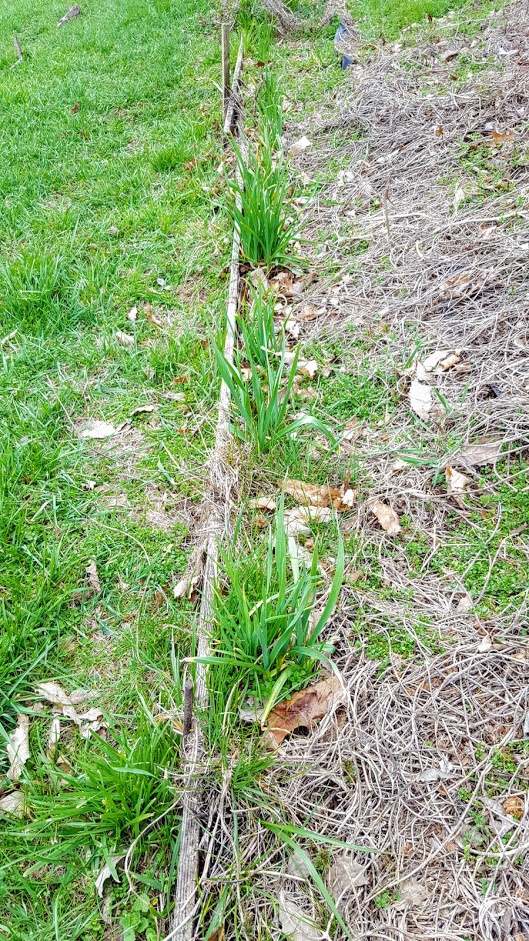Garlic is planted in the fall. I’m not ashamed to admit that I learned that fact somewhat recently when planning out the garden for next year. Individual cloves are planted in the fall where they begin to set roots. Topgrowth occurs the following spring and the new bulbs can be harvested in the early to mid summer. I also learned that a common problem in garlic cultivation is that the bulbs and roots will rot in the ground.
According to NOAA at water.weather.gov, the farm has received 9 inches of rain in the last 30 days, 5″ in the last 14 days and 3″ in the last week. With ground saturation further evidenced by the deep ruts my dad’s truck left in the pasture, I decided to let the ground dry out for another week before planting the garlic.
Types of Garlic
Garlic comes in three general types. Hardneck is more winter hardy with complex and stronger flavors that reflect growing conditions but come at the expense of less shelf life. Softneck garlic is type usually sold in grocery stores with mild flavor and long storage potential. Elephant garlic is actually technically a leek but has a garlic flavor that is even more mild with a long shelf life. Do note that garlics all have similar flavors when harvested, but the differences are formed in the curing process.
Variety Selection
I used this document from Virginia Tech/Virginia Cooperative Extension which provides recommendations specifically for the elevated regions west of the Blue Ridge Mountains. The point of this year’s planting of garlic is to learn the process and depending on success, multiply the amount of bulbs I can plant next year when commercial interests come into play.
Based on the linked document, I decided to focus on “Spanish Roja” while experimenting with Elephant garlic and softneck garlics. I linked to the cheapests sources that I found; the first two on amazon and all softneck garlics will be sourced from the grocery store. There are some passionate garlic cultivators out there who have formed networks, so a quick google search of your location is recommended to potentially find a great source of both knowledge and bulbs.
Planting:
Simply break the bulbs apart and plant individual cloves pointed-end upwards, 4 inches apart, and two inches deep. I’m going to flag each location so I can cover with mulch over winter then rake back the mulch in spring. Also I will experiment with not pulling the mulch back at all on some of the garlic plantings. I mulched over the freshly sewn buckwheat for the late summer crop and watched the weak rooted and fleshy stemmed plants work their way through the mulch. If buckwheat can power through some mulch, I’m sure garlic can.
Nutrient requirements:
Garlic really only require moderate amounts of nitrogen from what I have read. Between compost and clover living mulch, nothing more will be done. The clover mulching brings me to an interesting point…
Potential Companions:
Clover is my default companion. According to this source (PDF warning), when legumes like beans and peas are planted with garlic, each plant suppresses the growth of the other’s, yet increases the profit per area. I’m assuming the interaction between garlic and clover can be extrapolated to be the similar!
Plants in the allium family (onions, garlic, leeks, chives, others) have been reported to repel boring insects and animals like rabbits, both are great pests to fruit trees. I will use the cheaper softneck garlics from the grocery store as I do not believe aerating soil helps tree establishment, thus have not provided conditions for good bulb development in garlic.
Garlic helps pretty much every other garden plant with the exception being grapes for the reason that garlic stunts growth. Otherwise garlic repels “Aphids, Japanese beetles, mites, cabbage looper, ants, cabbage maggot, fruit borers, red spider mites, diamondback moth on Chinese cabbage, slugs” from the wikipedia entry on companion plants.
Conclusion
Another growth characteristic of garlic that I have not yet mentioned is that each generation, even in asexual vegetative reproduction, adapts to the growing condition. Combined with its immense insect deterring properties and commercial potential, it should be clear why I get those first generations into the ground as soon as possible. Any plants that survive to harvest strengthens my localized gene pool and similarly, those that die remove those plants containing genes unsuitable to my specific climatic and growing conditions.




